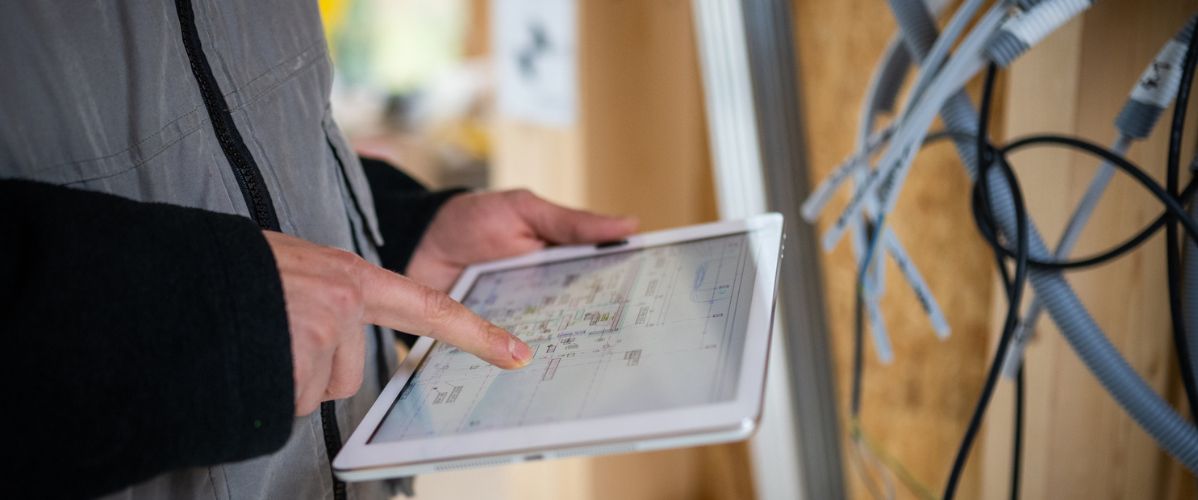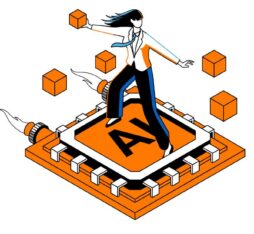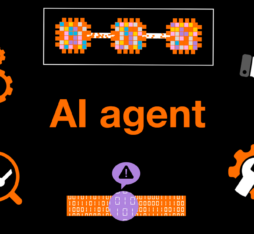• Considerable efficiencies mean huge time savings on repetitive tasks, thanks to the near-instant generation of reliable and accurate reports for real-life interventions.
In recent years, Orange and AMA have been working together to equip Field Engineers with innovative solutions designed to facilitate their work.
The solution uses some of the most successful LLMs on the market to quickly generate a relevant and representative intervention report.
Lightening the load
The collaboration began with remote assistance via the AMA XpertEye tool, using smart glasses equipped with augmented reality cameras. More recently, it has progressed with blockchain-based applications dedicated to notarising jobs or delegating responsibility. Generative AI now takes its place in this technological toolbox, focusing on a peripheral—but nevertheless essential—aspect of the profession: intervention reports. “Field Engineers work on jobs back-to-back. They only get time for this task at the ends of their rounds”, explained Philippe Delbary, Director in charge of the “Future of Work” programme at Orange. “At the end of the day, they may be tired, their memories hazy and their reports therefore incomplete, fragmented or inaccurate. In order to avoid these problems and lighten the engineers’ loads, AMA builds on the data captured during operations using generative AI. A reliable and faithful account of how the intervention actually took place is produced quickly and automatically”. This report comes pre-drafted: AI is used to save the engineers time, but they control the text with the ability to modify and edit it at their leisure.
Large language models in action
When Field Engineers use AMA XpertEye to collaborate with colleagues or experts, a lot of data is generated via audio and video streams. This information, contextualised in advance, is the raw material that generative AI ingests, analyses and synthesises. In this case, the solution relies on some of the most advanced LLMs (Large Language Models) on the market — after integrating GPT-4o, AMA also announced compatibility with Mistral’s open-source LLM. From a dedicated graphical interface, users will be able to access all the recorded data and obtain a relevant and representative report of their work, via a that can be adapted to meet their needs. The result is almost instantaneous, saving Field Engineers precious time on a repetitive, low-value task.
A valuable knowledge-management tool
Aside from automated report generation, the tool—which will be presented at SIDO 2024—can also be used as a search engine. “XpertEye’s video conferencing component is used to collect relevant content and data”, explained Guillaume Campion, Vice President of Global Sales at AMA. “What we seek to gain with generative AI, in addition to the reporting functionality, is a knowledge-management tool that enables us to make the most of this volume of data, in the form of a purpose-built search engine. Field Engineers will be able to search this knowledge base of all past interventions via a chatbot, enabling them to access advice and locate procedures or precise information. Once more, the aim is to make life easier for Field Engineers by providing them with a kind of User Manual 2.0. More broadly, this tool will facilitate onboarding for new starters and enrich the training systems of corporate customers”.
The solution is therefore likely to be valuable in many business sectors. The current use case may only concern Field Engineers, but other maintenance professionals also stand to gain from it, as well as audit and inspection professionals. All these roles systematically involve writing reports, which is often perceived by the workers as a tedious and repetitive task. Generative AI can facilitate and accelerate content production, while often improving quality.
Augmenting engineers by means of digital twins? :
Orange is exploring many avenues to streamline the work of engineers. Unveiled at Orange OpenTech 2024, the Networks AR Visualization and Guidance mobile app combines the digital twins of the telecom network and augmented reality. Developed as part of the Maori project by the Augmented Operations research domain, dedicated to emerging solutions for augmenting businesses, this innovation allows engineers to visualise network infrastructure—otherwise invisible to the naked eye—using their work mobile phone. They can more easily identify where work needs to be carried out in the surrounding area.
According to researcher Jérémy Lacoche: “This project was born from a simple observation: locating equipment and pinpointing the correct cable routing, for example, can often be difficult and time consuming. Augmented reality offers a helping hand for engineers in their work. By superimposing digital plans in 3D using augmented reality, they will be able to more quickly and accurately locate a customer’s position on a cabinet, identify the right cables etc., all while following the detailed instructions on their mobile phone.”
As project manager Nicole Le Minous puts it: “The project was trialled with engineers in the Grand-Ouest region. Initial feedback has been positive, as technicians are keen on these kinds of innovations. We put their feedback to good use to refine the app during development.”
The project’s aim is to equip all maintenance and field engineers working on the telecom network with this technology. Beyond its benefits in terms of operational maintenance for the network Orange operates, the app could also be embraced by other network, water, gas and electricity carriers in the future.
A prompt refers to the written command or instruction given to a generative AI system to shape its response.
 AMA
AMA











